Organic social is a type of unpaid traffic that comes from social media platforms like Facebook, Instagram, and TikTok.
In Google Analytics 4 (GA4), it falls under the larger category of organic traffic, which also includes visitors from search engines without ads.
In this article, you'll understand what organic social means in GA4 and why it matters for your traffic analysis.
What Is Organic Social?
Organic social is a part of organic traffic in GA4. Organic traffic comes from any unpaid session on your website, and it's divided into organic search and organic social.
While organic search refers to traffic from search engines (Google, Bing, etc.), organic social traffic also comes from unpaid content on social media platforms such as Facebook, TikTok, and Instagram.
GA4's default channel groups help to classify website traffic. It can be organic search, paid search, paid social, organic shopping, referrals, and others including organic social.
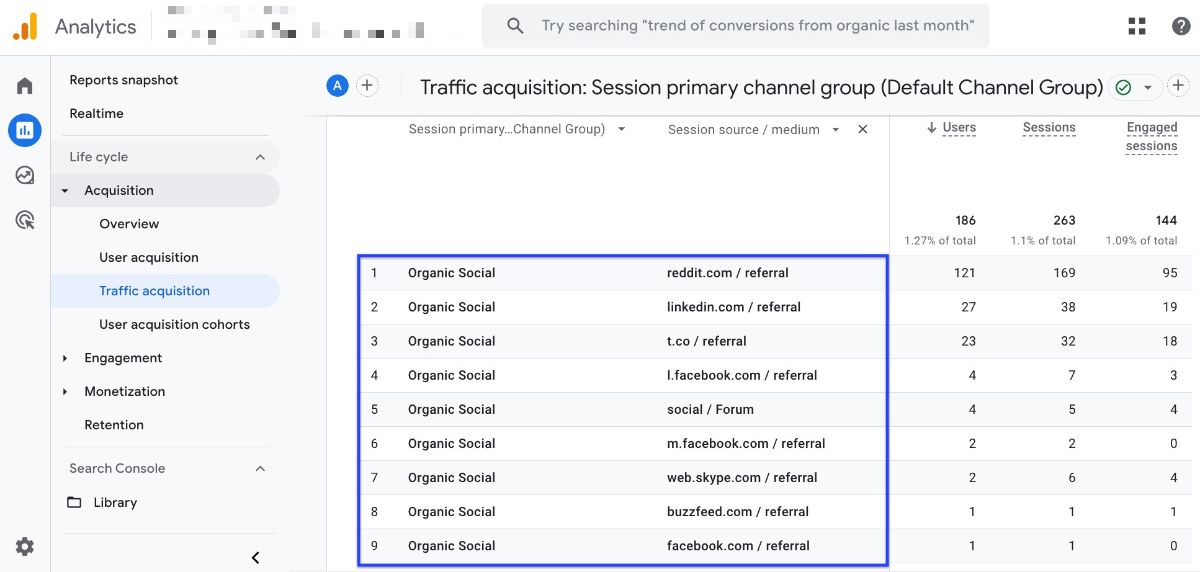
How to Find Organic Social in GA4
Let's start with where you can find your organic social traffic in Google Analytics 4 (GA4).
Default channel groups including organic social can be found in acquisition reports (user and traffic acquisition).
However, we'll focus on the traffic acquisition here.
If you're not sure which report will give you the details you need, check out this blog post about GA4's traffic sources .
Please follow these steps to view organic social data:
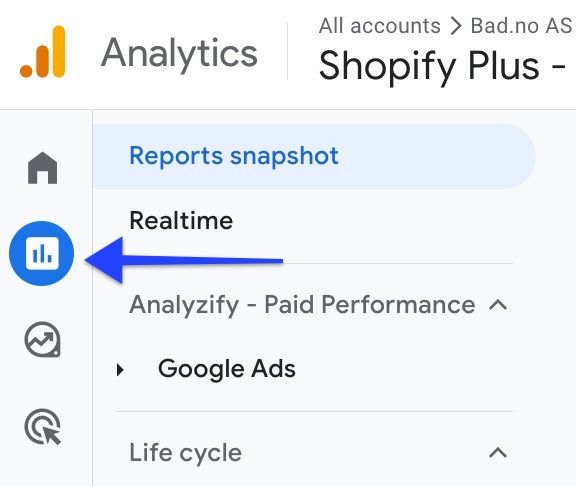
Let's dig into the details.
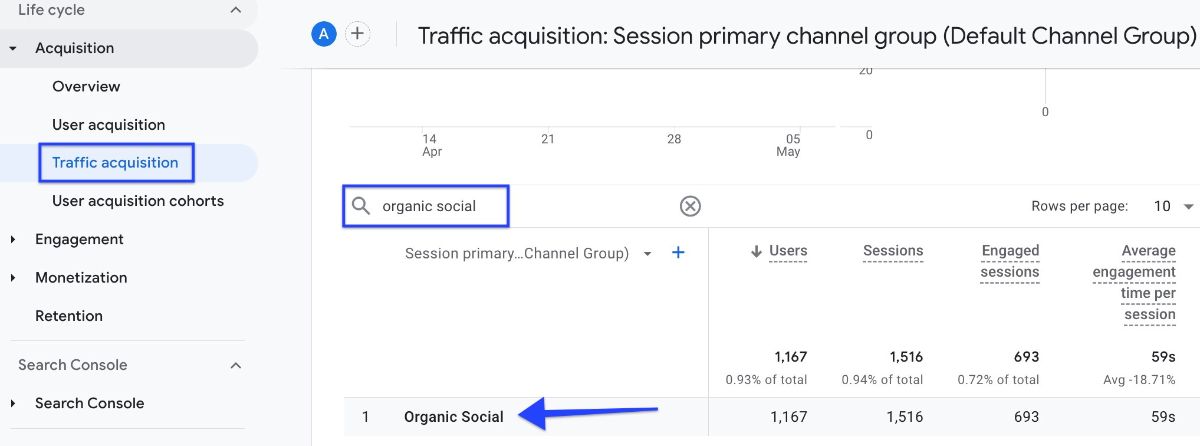
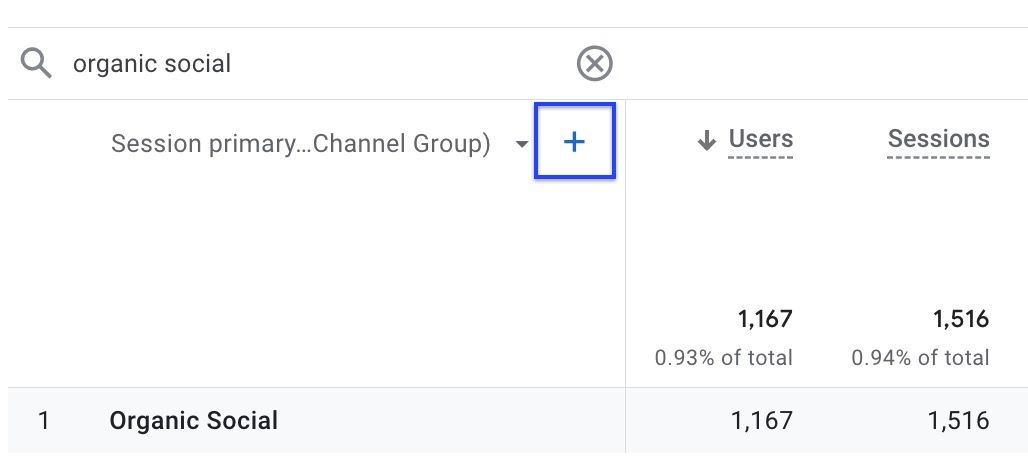
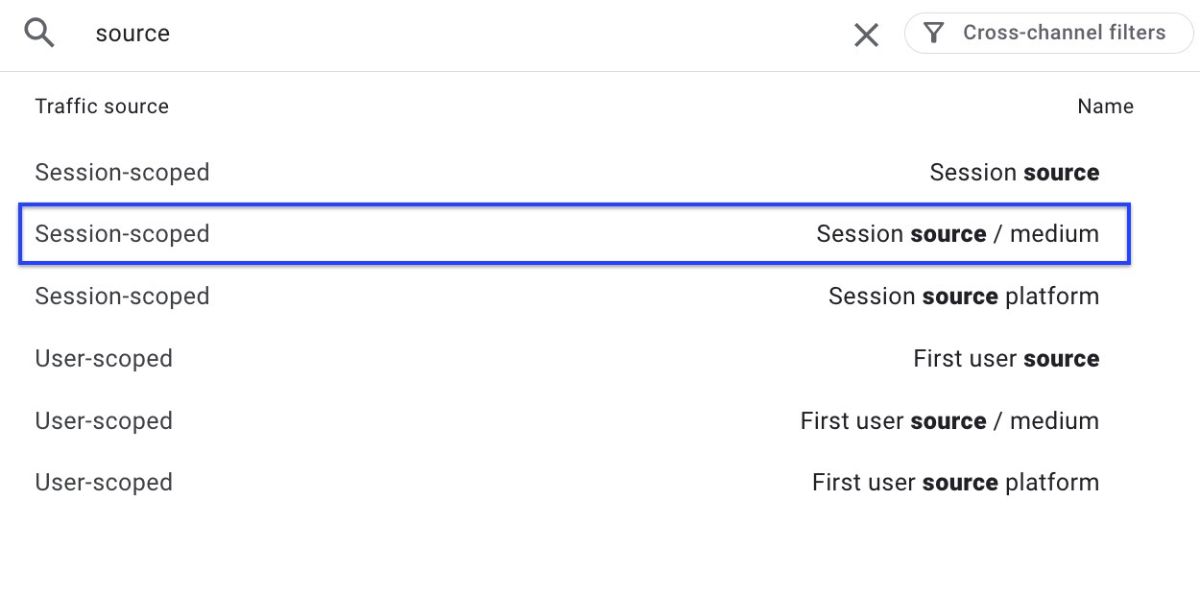
While the session source shows you which social platforms bring you traffic, the medium indicates the type of traffic, such as referrals.
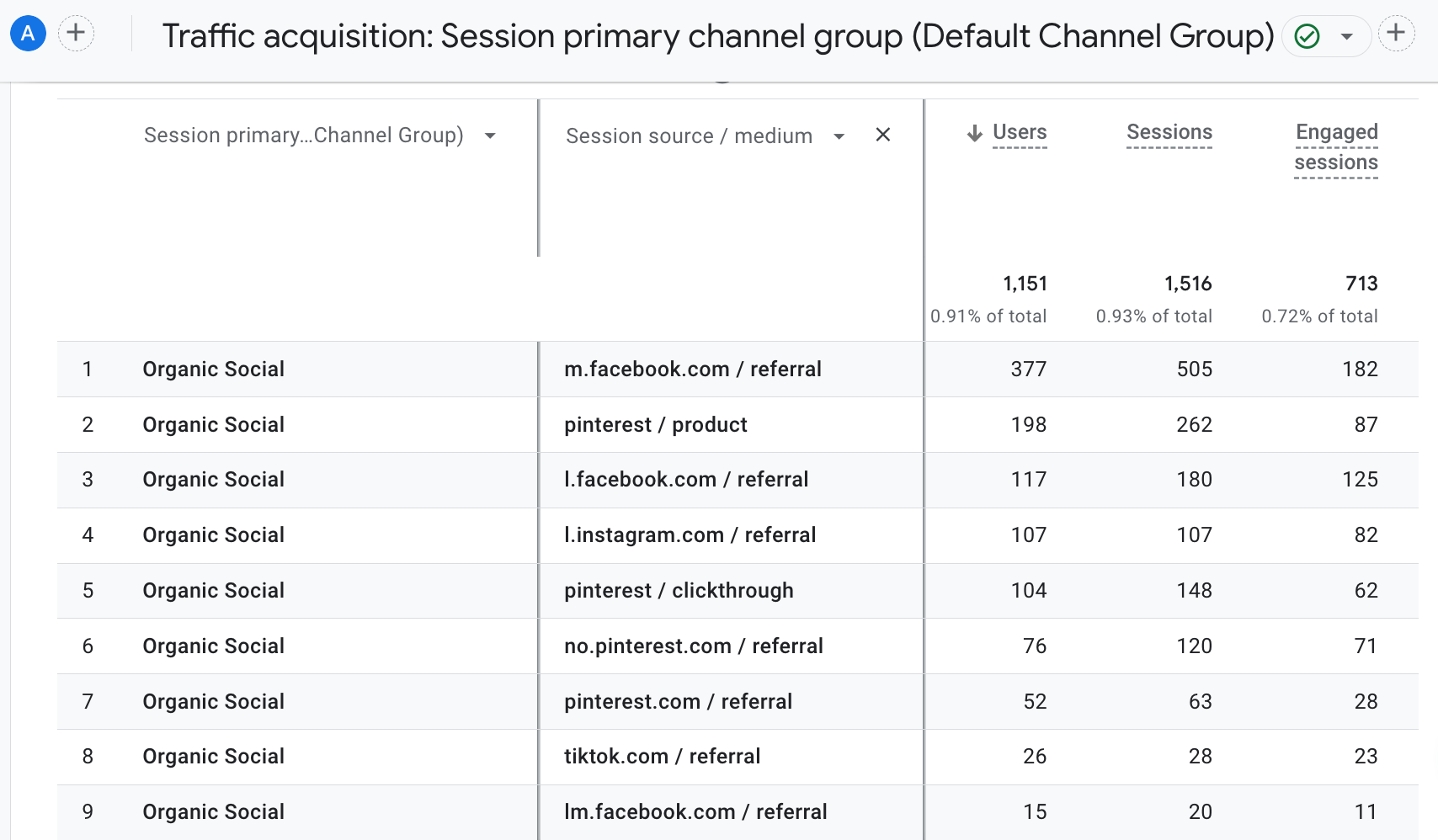
Traffic-Source Dimensions for Organic Social
To see more data broken down by platform or channel, you might consider adding different dimensions.
Traffic-source dimensions tell you:
- where your traffic comes from ( source : google, bing etc.),
- how people get to your website or app ( medium : organic, cpc, etc.),
- what particular strategies you use to drive that traffic ( campaign , keywords, etc.).
In acquisition report , you can choose two dimensions for a single report.
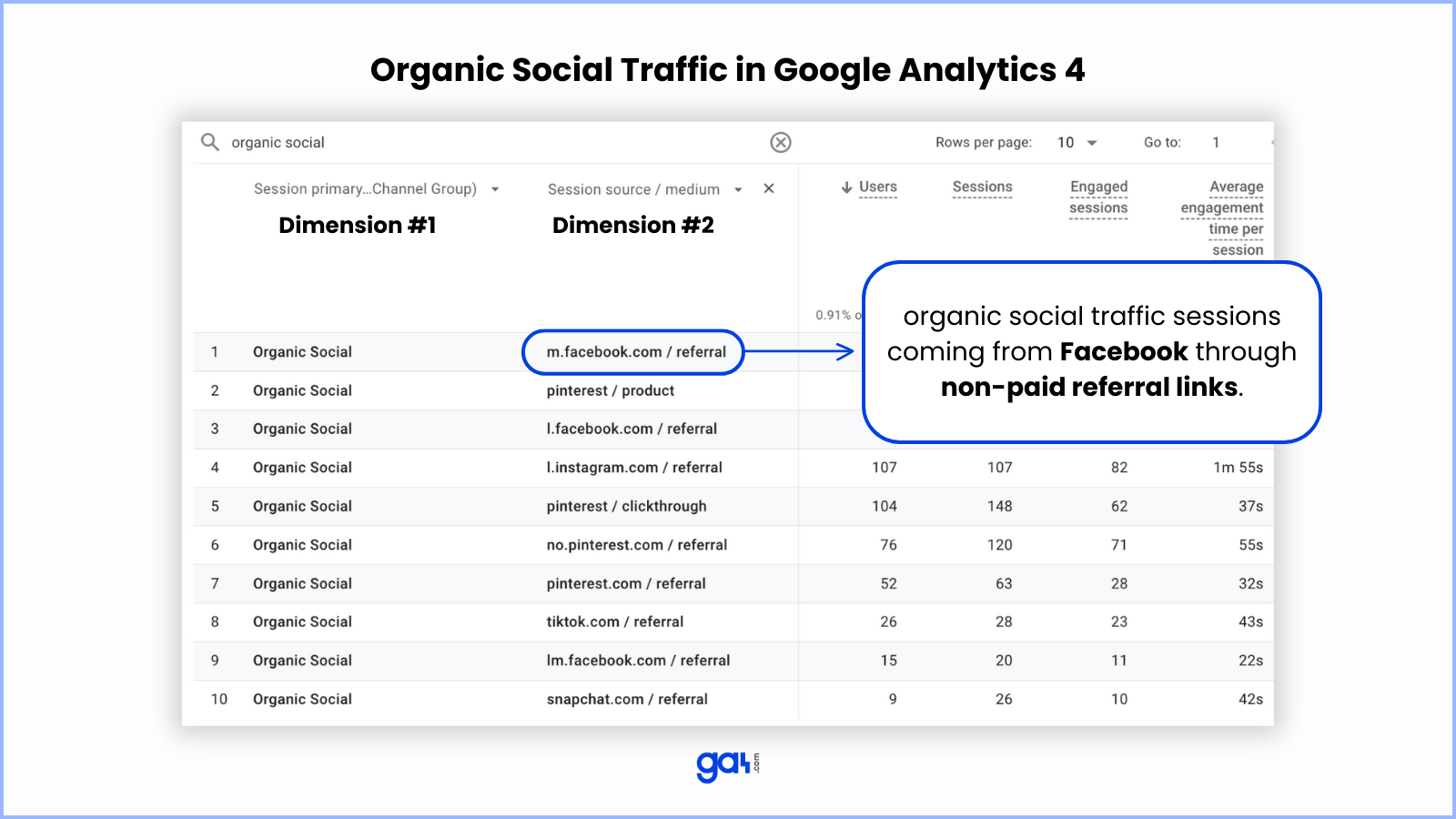
For example, in the report above, we added Session primary default channel group and Session source/medium.
When you type Organic Social in the search bar right above the table, the default channel group will only show you organic social data in traffic acquisition.
Moreover, you can see how much traffic the organic social platforms have brought along with many metrics such as engaged sessions , event count, total revenue, active users etc.
In GA4, social media traffic is often categorized as Referral medium.
These are the most important dimensions you need to know to use in your organic social analysis:
- Session default channel group : Rule-based definitions of traffic channels (ex: organic social)
- Session source : The specific source that directs traffic to the website. (ex: facebook, instagram etc.)
- Session medium : The type of traffic.
- Session source/medium : The combination of source and medium.
- Session campaign : Marketing campaigns to drive traffic
Let's see how you should track organic social traffic in GA4 based on Google's definitions.
Organic Social Traffic in GA4: Rules & Descriptions
Here's how rules are applied for Organic Social traffic in GA4:
|
Channel: Organic Social |
Description : Organic Social is the channel by which users arrive at your site/app via non-ad links on social sites like Facebook or Twitter. |
|
Analytics Definition: Source matches a regex list of social sites or Medium is one of (“social”, “social-network”, “social-media”, “sm”, “social network”, “social media”) |
( Source : GA4 Default Channel Groups )
You can download the complete list of social sites and platforms that Analytics considers as default traffic sources here. It might help you to create effective campaigns.
Please refer to this document for all traffic sources sorting into default channel groups.
Organic Social Channel Example
For example, Pinterest has been added to the SOURCE_CATEGORY_SOCIAL list . Let's assume the medium is social. Then, this channel will then be called Organic Social if the medium is social.

Track Organic Social Traffic in GA4: 3 Reports
Now let's look at and analyze different traffic data by customizing the traffic acquisition report. We'll answer the following questions by using relevant Analytics reports.
First, follow these steps to learn how you can customize standard GA4 reports.
There are several ways to customize reports in Google Analytics, but the most flexible method is using explorations.
Thus, we'll create reports in explore section here.
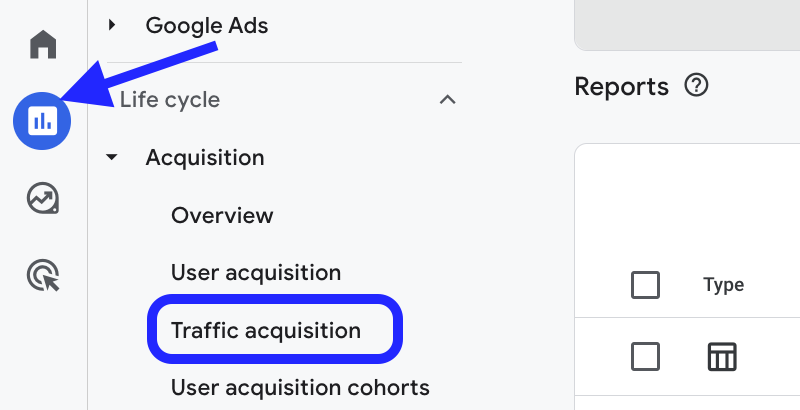
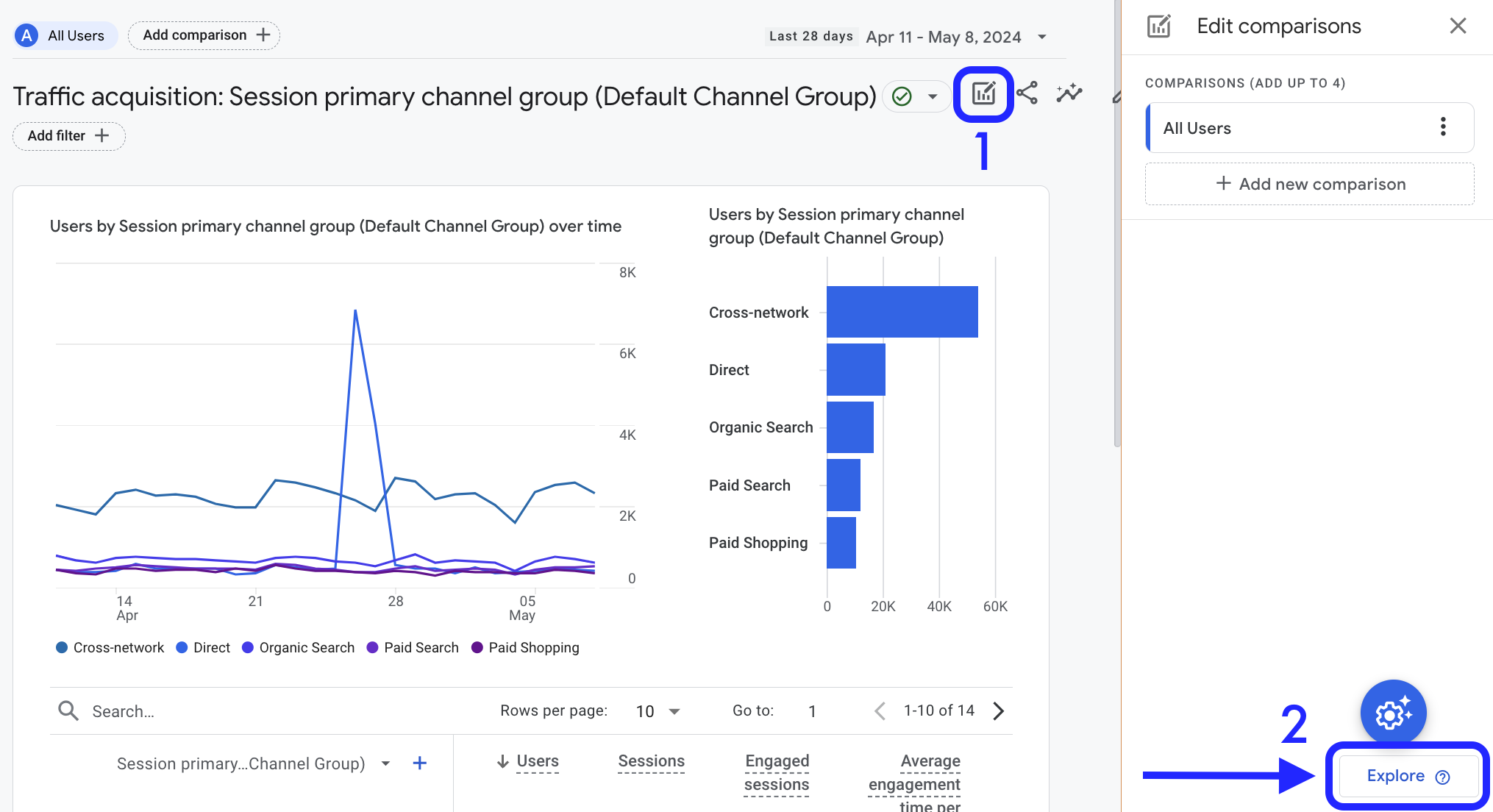
You can now add or remove the metrics and dimensions you want here.
By clicking the + button, you can see the available options and use them by clicking import.
The important thing is to move the selected values to the rows and values section to make them visible in the report.
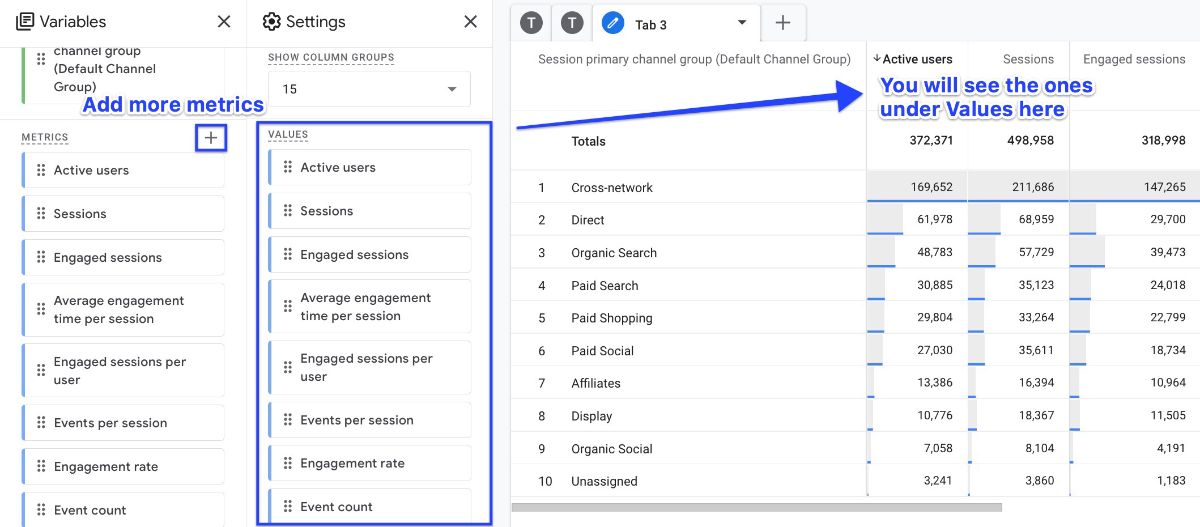
Now, let's look at which values would be beneficial for you to use in response to specific questions about organic social traffic.
🔍 How much organic traffic are we getting from social media?
The number of active users here shows how many users came from organic social within the selected date range.
The engagement rate shows how engaged these users were while browsing your site.

🔍 How likely are users to take action on your site?
Conversion rate is another metric that can be useful. Google has made a change, and now conversions within Google Analytics 4 are called key events.
Therefore, you will see them as key events in reports. For more information on this topic, you can read our article on Key Events in GA4 .
The session key event rate will tell you the following: How likely are users to take action on your site?
This action will change depending on the types and objectives of companies but usually covers important events like purchases.
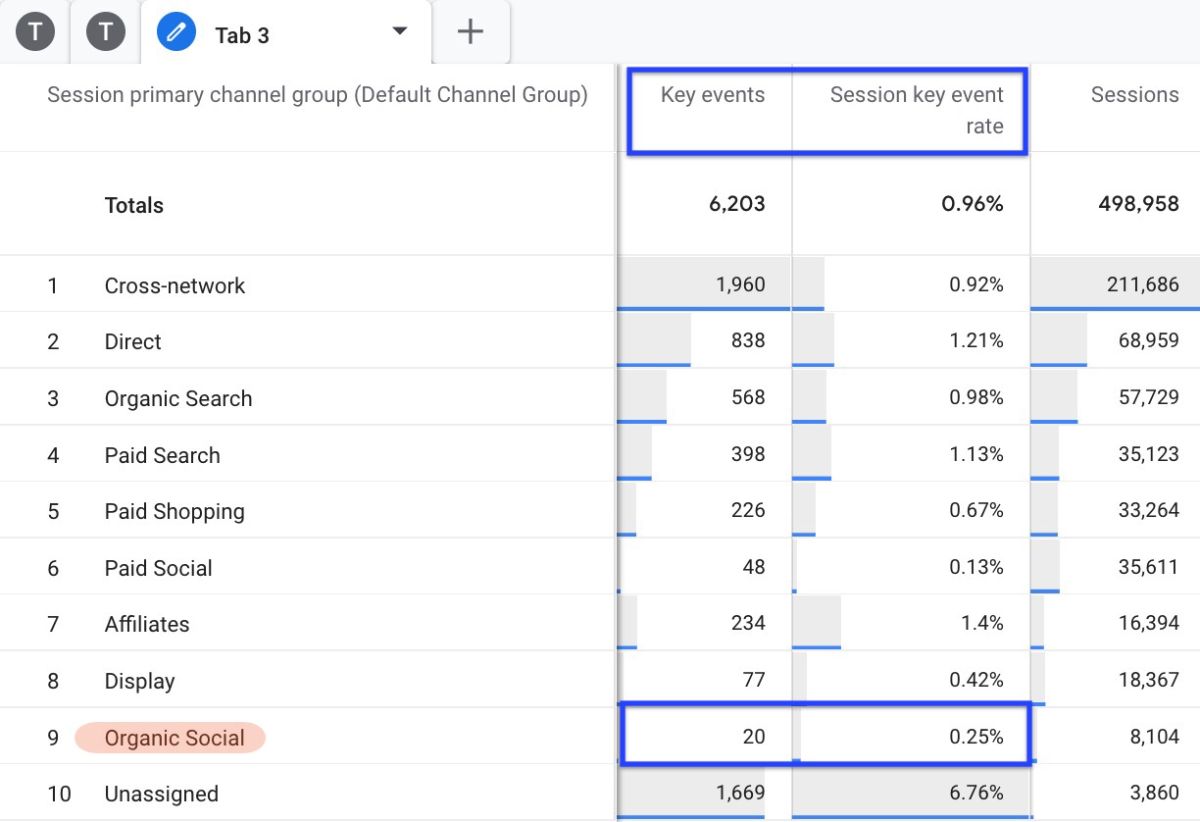
Compared to other traffic sources, social media visitors have lower conversion rates. Visitors from social media typically have less intent than those from search or direct.
FAQ: Understanding Organic Social in GA4
Here are the frequently asked questions about the organic social traffic in Google Analytics (GA4):
1. What is organic social in GA4?
Organic social in GA4 refers to unpaid traffic that comes from social media platforms like Facebook, Instagram, and TikTok. It is a part of organic traffic and helps you understand how effectively your social media content attracts visitors to your website without paid promotions.
2. How can I find organic social data in GA4?
To view organic social in GA4, go to the Traffic Acquisition report under the Acquisition section. You can filter the data by using the search bar and typing “Organic Social” to see traffic coming specifically from unpaid social media sources.
3. What are the key metrics to track for organic social in GA4?
When analyzing organic social in GA4, focus on metrics like active users, engagement rate, event count, and total revenue. These metrics help you understand how well your unpaid social media posts drive traffic, keep users engaged, and contribute to conversions.
4. How does GA4 classify organic social traffic?
Organic social in GA4 is classified based on the source and medium of the traffic. If the source matches a list of recognized social platforms (like Facebook or Twitter) and the medium is labeled as “social” or similar terms, GA4 categorizes it as organic social traffic.
5. Can I customize reports for organic social in GA4?
Yes, you can customize reports for organic social in GA4 using the Explore section. By adding relevant metrics and dimensions like Session source/medium and Session default channel group, you can gain deeper insights into how your organic social traffic performs.
Conclusion: Guide To Organic Social In GA4
Tracking organic social in GA4 reveals how your unpaid social media efforts drive traffic to your site.
By exploring this data, you can uncover which platforms and content types work best.
This knowledge helps you fine-tune your social strategy to boost engagement and reach more visitors.
